Buttons and Switches for Instrument Clusters
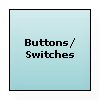 Switches are
devices that provide manual input or control for equipment, a device, or a process. Switches
serve many purposes, provide immediate emergency control, local control, or indication; and are
available in many formats, shapes, sizes, and colors. Switches and buttons are important in
everyday use from light switches or buttons to automatic switches that shut off a motor when an
attached gate has fully shut.
Switches are
devices that provide manual input or control for equipment, a device, or a process. Switches
serve many purposes, provide immediate emergency control, local control, or indication; and are
available in many formats, shapes, sizes, and colors. Switches and buttons are important in
everyday use from light switches or buttons to automatic switches that shut off a motor when an
attached gate has fully shut.
Real Time Clocks for Instrument Clusters
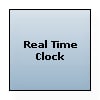 Real Time Clocks
(RTCs) are IC devices that keep track of time. A typical RTC can provide the time of day as well
as the date via a serial bus such as I2C or SPI. Although similar in many ways, RTCs should not
be confused with clock generators, which are used to synchronize various parts of a circuit.
Real Time Clocks
(RTCs) are IC devices that keep track of time. A typical RTC can provide the time of day as well
as the date via a serial bus such as I2C or SPI. Although similar in many ways, RTCs should not
be confused with clock generators, which are used to synchronize various parts of a circuit.
Multiplexers for Instrument Clusters
 A multiplexer (or
MUX) is an electronic device with multiple inputs (analog or digital) from which it can select
one to forward as an output. In other words, a MUX allows a circuit to switch between inputs for
a signal line. A MUX can reduce cost and part count in many applications by enabling multiple
signals to “time-share” a single resource, such as an Analog-to-Digital Converter (ADC) or a
microprocessor.
A multiplexer (or
MUX) is an electronic device with multiple inputs (analog or digital) from which it can select
one to forward as an output. In other words, a MUX allows a circuit to switch between inputs for
a signal line. A MUX can reduce cost and part count in many applications by enabling multiple
signals to “time-share” a single resource, such as an Analog-to-Digital Converter (ADC) or a
microprocessor.
Level Shifters for Instrument Clusters
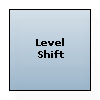 Level translators,
or level shifters, are needed because voltage levels continue to migrate to lower values to
support new, low-power high-performance applications. With this change, system incompatibilities
arise as technologies evolve at a different pace. If two devices are to interface reliably, the
output driver voltages must be compatible with receiver input thresholds. For this condition to
be met in mixed voltage systems, a level, or voltage translator is often required.
Level translators,
or level shifters, are needed because voltage levels continue to migrate to lower values to
support new, low-power high-performance applications. With this change, system incompatibilities
arise as technologies evolve at a different pace. If two devices are to interface reliably, the
output driver voltages must be compatible with receiver input thresholds. For this condition to
be met in mixed voltage systems, a level, or voltage translator is often required.
Flash Memory for Instrument Clusters
 Easily the most common
type of non-volatile, solid-state data storage used today, NAND flash memory can be found in USB
flash drives, solid-state drives, memory cards, smartphones, notebooks, and more. Its ubiquity
is due in no small part to the affordability of NAND flash and its high memory storage density,
packing gigabytes of data into thumbnail-size packages, and at relatively low cost. Like any
memory, however, flash has its limitations; it may not be the best choice for applications that
require a great many program-erase cycles, or that must access small amounts of data on a
bit-wise basis – tasks which are much better suited for random access memory (RAM).
Easily the most common
type of non-volatile, solid-state data storage used today, NAND flash memory can be found in USB
flash drives, solid-state drives, memory cards, smartphones, notebooks, and more. Its ubiquity
is due in no small part to the affordability of NAND flash and its high memory storage density,
packing gigabytes of data into thumbnail-size packages, and at relatively low cost. Like any
memory, however, flash has its limitations; it may not be the best choice for applications that
require a great many program-erase cycles, or that must access small amounts of data on a
bit-wise basis – tasks which are much better suited for random access memory (RAM).
Memory for Instrument Clusters
 Memory stores data and
programs for later use. Some memory is Read-Only, which means nothing new can be stored, and
other memory is Read/Write memory where a processor can read from or write to this method of
data storage. Some memory is non-volatile, meaning that a power source is not required to
preserve stored information. Other types of memory lose their information and become a blank
slate every time power is removed from the device. Two types of memory, EEPROM and flash, share
many of the same qualities – in fact, flash memory is often considered an advanced form of
EEPROM. However, one of the largest functional distinctions between the two lies in how the
memory can be erased: unlike flash, EEPROM is erasable at a more precise, byte-wise level. For
this reason among others, EEPROM continues to see industry use in applications that must store
small amounts of non-volatile data.
Memory stores data and
programs for later use. Some memory is Read-Only, which means nothing new can be stored, and
other memory is Read/Write memory where a processor can read from or write to this method of
data storage. Some memory is non-volatile, meaning that a power source is not required to
preserve stored information. Other types of memory lose their information and become a blank
slate every time power is removed from the device. Two types of memory, EEPROM and flash, share
many of the same qualities – in fact, flash memory is often considered an advanced form of
EEPROM. However, one of the largest functional distinctions between the two lies in how the
memory can be erased: unlike flash, EEPROM is erasable at a more precise, byte-wise level. For
this reason among others, EEPROM continues to see industry use in applications that must store
small amounts of non-volatile data.
CAN Transceivers for Instrument Clusters
 CAN is an acronym for
Controller Area Network and refers to a fault-tolerant communications protocol that is flexible
for system design, supports multiple network topologies, and has become a de facto standard for
high integrity serial communications in industrial and automotive embedded applications. In a
CAN network, several short pieces of data like a motor’s run status, temperature, or RPM is
broadcast over the entire network at up to 1 megabit per second (Mbps.) CAN is meant for
applications that have to report and consume numerous but small pieces of data consistently
among nodes and has the ability to self-diagnose and repair data errors. CAN is well-suited to
environments with machinery, since CAN is designed to be reliable in rugged environments that
include interference or introduce noise. CAN is also well-suited to the transportation industry.
CAN is an acronym for
Controller Area Network and refers to a fault-tolerant communications protocol that is flexible
for system design, supports multiple network topologies, and has become a de facto standard for
high integrity serial communications in industrial and automotive embedded applications. In a
CAN network, several short pieces of data like a motor’s run status, temperature, or RPM is
broadcast over the entire network at up to 1 megabit per second (Mbps.) CAN is meant for
applications that have to report and consume numerous but small pieces of data consistently
among nodes and has the ability to self-diagnose and repair data errors. CAN is well-suited to
environments with machinery, since CAN is designed to be reliable in rugged environments that
include interference or introduce noise. CAN is also well-suited to the transportation industry.
LIN Transceivers for Instrument Clusters
 LIN (Local
Interconnect Network) is a vehicle network protocol for communication between automotive
components. Inexpensive and relatively simple to implement, a LIN network uses a broadcast
topology with a single master – typically an MCU – and up to 12 slave devices. As such, it is
often used for networking small subsystems, with the master device connecting the subsystem to
the vehicle’s main bus line, such as a CAN bus.
LIN (Local
Interconnect Network) is a vehicle network protocol for communication between automotive
components. Inexpensive and relatively simple to implement, a LIN network uses a broadcast
topology with a single master – typically an MCU – and up to 12 slave devices. As such, it is
often used for networking small subsystems, with the master device connecting the subsystem to
the vehicle’s main bus line, such as a CAN bus.
DC/DC Converters for Instrument Clusters
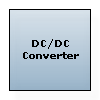 DC/DC regulators
are circuits that convert DC voltage from one level to another and maintain that voltage at a
constant level. Electronic systems often have several sub-circuits, each with its own voltage
level requirement that may be higher or lower than the main power supply. Step-up (boost)
converters raise a voltage to a higher level, while step-down (buck) converters lower it. Some
DC/DC converter types can raise or lower voltage, such as "buck-boost" converters. DC/DC
converters may offer options such as multiple softstart levels, undervoltage lockout, protection
against overvoltage and undervoltage, and programmable short-circuit protection. All of these
devices are considered to be in the same category of integrated chips, typically categorized as
power management devices.
DC/DC regulators
are circuits that convert DC voltage from one level to another and maintain that voltage at a
constant level. Electronic systems often have several sub-circuits, each with its own voltage
level requirement that may be higher or lower than the main power supply. Step-up (boost)
converters raise a voltage to a higher level, while step-down (buck) converters lower it. Some
DC/DC converter types can raise or lower voltage, such as "buck-boost" converters. DC/DC
converters may offer options such as multiple softstart levels, undervoltage lockout, protection
against overvoltage and undervoltage, and programmable short-circuit protection. All of these
devices are considered to be in the same category of integrated chips, typically categorized as
power management devices.
Processors for Instrument Clusters
 The term "processor"
refers to an electronic device that performs computational functions and carries out the
instructions of a stored program. Other terms for processor are microprocessor, central
processing unit, and digital signal processor. Essentially, the processor refers to "the brains
of a computer."
The term "processor"
refers to an electronic device that performs computational functions and carries out the
instructions of a stored program. Other terms for processor are microprocessor, central
processing unit, and digital signal processor. Essentially, the processor refers to "the brains
of a computer."
Buck/Boost Regulators for Instrument Clusters
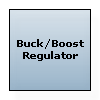 A buck
converter is a power efficient voltage step-down converter that changes a higher voltage to a
lower voltage. Whereas a linear regulator can achieve the same purpose, regulators can waste
more energy via conversion of excess energy to heat. For this reason, a buck DC/DC converter is
the preferred choice for power-efficient designs. A DC/DC boost converter, also known as a
step-up converter, is a semiconductor device or electrical circuit that has an output DC voltage
that is greater than the DC input voltage. The amount of output current will be lower than the
source current, however. Boost converters can increase the voltage and thus reduce the total
number of battery cells required for portable applications.
A buck
converter is a power efficient voltage step-down converter that changes a higher voltage to a
lower voltage. Whereas a linear regulator can achieve the same purpose, regulators can waste
more energy via conversion of excess energy to heat. For this reason, a buck DC/DC converter is
the preferred choice for power-efficient designs. A DC/DC boost converter, also known as a
step-up converter, is a semiconductor device or electrical circuit that has an output DC voltage
that is greater than the DC input voltage. The amount of output current will be lower than the
source current, however. Boost converters can increase the voltage and thus reduce the total
number of battery cells required for portable applications.
Audio Digital-to-Analog Converters for Instrument Clusters
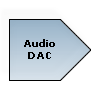 A
digital-to-analog converter (DAC) is a semiconductor device that is used to convert a digital
code into an analog signal, such as electric charge, current, or voltage. A DAC is the principal
means by which computer and digitally-based systems translate digital data into real-world
signals. An audio-quality DAC has specifications tuned for audio applications such as a high
dynamic range with low to no distortion.
A
digital-to-analog converter (DAC) is a semiconductor device that is used to convert a digital
code into an analog signal, such as electric charge, current, or voltage. A DAC is the principal
means by which computer and digitally-based systems translate digital data into real-world
signals. An audio-quality DAC has specifications tuned for audio applications such as a high
dynamic range with low to no distortion.
Amplifiers for Instrument Clusters
 Amplifiers have
enormous voltage gain, use feedback to operate, and can be classified in different ways. They
can be identified by the device they are intended to drive (e.g., headphone amplifier, speaker
amplifier), the input that they are to amplify (e.g. guitar amplifier), the frequency range of
the signal (e.g., RF, Audio), and by the function that they perform (e.g. inverting amplifier,
power amplifier.)
Amplifiers have
enormous voltage gain, use feedback to operate, and can be classified in different ways. They
can be identified by the device they are intended to drive (e.g., headphone amplifier, speaker
amplifier), the input that they are to amplify (e.g. guitar amplifier), the frequency range of
the signal (e.g., RF, Audio), and by the function that they perform (e.g. inverting amplifier,
power amplifier.)
Load Drivers for Instrument Clusters
 Designers of power
electronic circuits must often drive power switches that feed DC, AC, or power signals to a
variety of workloads. Logic-level electronic circuits provide the driving signals. In general,
however, the power sources and their loads have reference levels different from that of the
control circuitry (ground). MOSFET selection begins by choosing devices that can handle the
required current, then giving careful consideration to thermal dissipation in high current
applications.
Designers of power
electronic circuits must often drive power switches that feed DC, AC, or power signals to a
variety of workloads. Logic-level electronic circuits provide the driving signals. In general,
however, the power sources and their loads have reference levels different from that of the
control circuitry (ground). MOSFET selection begins by choosing devices that can handle the
required current, then giving careful consideration to thermal dissipation in high current
applications.
LED Drivers for Instrument Clusters
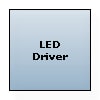 LED drivers are a
constant-current source commonly used to power LEDs for screen backlighting. LEDs are
current-driven devices whose brightness is proportional to the magnitude of forward current
flow. Typical desired features for an LED driver are direct control of current, high efficiency,
PWM dimming, overvoltage protection, load disconnect, small size, and ease of use.
LED drivers are a
constant-current source commonly used to power LEDs for screen backlighting. LEDs are
current-driven devices whose brightness is proportional to the magnitude of forward current
flow. Typical desired features for an LED driver are direct control of current, high efficiency,
PWM dimming, overvoltage protection, load disconnect, small size, and ease of use.
Step-Down Regulators for Instrument Clusters
 A step-down,
or buck converter, is a DC-to-DC power converter with an output DC voltage that is lower than
its input DC voltage. Although one can use a linear regulator to reduce the voltage, step-down
converters are much more efficient. Step-down converters consume less power as well as operate
at cooler temperatures. Electronic systems often have several sub-circuits, each with its own
voltage level requirement that may be higher or lower than the main power supply, therefore
step-down converters may be required. Since the output voltage of the buck is lower than the
input voltage, it follows that the output current must be higher than the input current.
A step-down,
or buck converter, is a DC-to-DC power converter with an output DC voltage that is lower than
its input DC voltage. Although one can use a linear regulator to reduce the voltage, step-down
converters are much more efficient. Step-down converters consume less power as well as operate
at cooler temperatures. Electronic systems often have several sub-circuits, each with its own
voltage level requirement that may be higher or lower than the main power supply, therefore
step-down converters may be required. Since the output voltage of the buck is lower than the
input voltage, it follows that the output current must be higher than the input current.
Audio Amplifiers for Instrument Clusters
 A power or
audio amplifier is typically used to greatly increase the signal strength, or amplitude, of a
current or voltage signal. In audio applications, late stage "power" amplifiers in a signal
chain can be used to increase the power output of a signal such that the signal can physically
move, or drive, the diaphragms in a loud speaker.
A power or
audio amplifier is typically used to greatly increase the signal strength, or amplitude, of a
current or voltage signal. In audio applications, late stage "power" amplifiers in a signal
chain can be used to increase the power output of a signal such that the signal can physically
move, or drive, the diaphragms in a loud speaker.
LED Backlights for Instrument Clusters
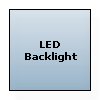 A backlight is
used in or with a liquid crystal display (LCD). Because LCDs do not produce any light
themselves, backlight illumination is often necessary to make the screen acceptably readable.
Many of today’s backlights use either light emitting diodes (LEDs) or cold cathode fluorescent
lamps (CCFL) as a light source. As its name suggests, a backlight typically illuminates the
display from the back side of (i.e. beneath) the display.
A backlight is
used in or with a liquid crystal display (LCD). Because LCDs do not produce any light
themselves, backlight illumination is often necessary to make the screen acceptably readable.
Many of today’s backlights use either light emitting diodes (LEDs) or cold cathode fluorescent
lamps (CCFL) as a light source. As its name suggests, a backlight typically illuminates the
display from the back side of (i.e. beneath) the display.
Low-Dropout Regulators for Instrument Clusters
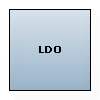 A Low Drop Out (voltage)
Regulator is a voltage regulator that automatically maintains a constant voltage level and
features a low potential at below which it can no longer reliably regulate. LDOs stabilize input
or supply voltages. LDOs are instrumental in enabling the power-efficient portables in use today
because they enable very low minimum operating voltages.
A Low Drop Out (voltage)
Regulator is a voltage regulator that automatically maintains a constant voltage level and
features a low potential at below which it can no longer reliably regulate. LDOs stabilize input
or supply voltages. LDOs are instrumental in enabling the power-efficient portables in use today
because they enable very low minimum operating voltages.
Power Management ICs for Instrument Clusters
 A Power Management
Integrated Circuit (PMIC) is a special-purpose IC that provides one or more power management
related functions. These can include voltage regulation, DC/DC conversion, battery management
capability and more. Many PMICs offer an I2C and/or SPI bus interface, and some might provide
additional features such as an integrated touch screen interface.
A Power Management
Integrated Circuit (PMIC) is a special-purpose IC that provides one or more power management
related functions. These can include voltage regulation, DC/DC conversion, battery management
capability and more. Many PMICs offer an I2C and/or SPI bus interface, and some might provide
additional features such as an integrated touch screen interface.